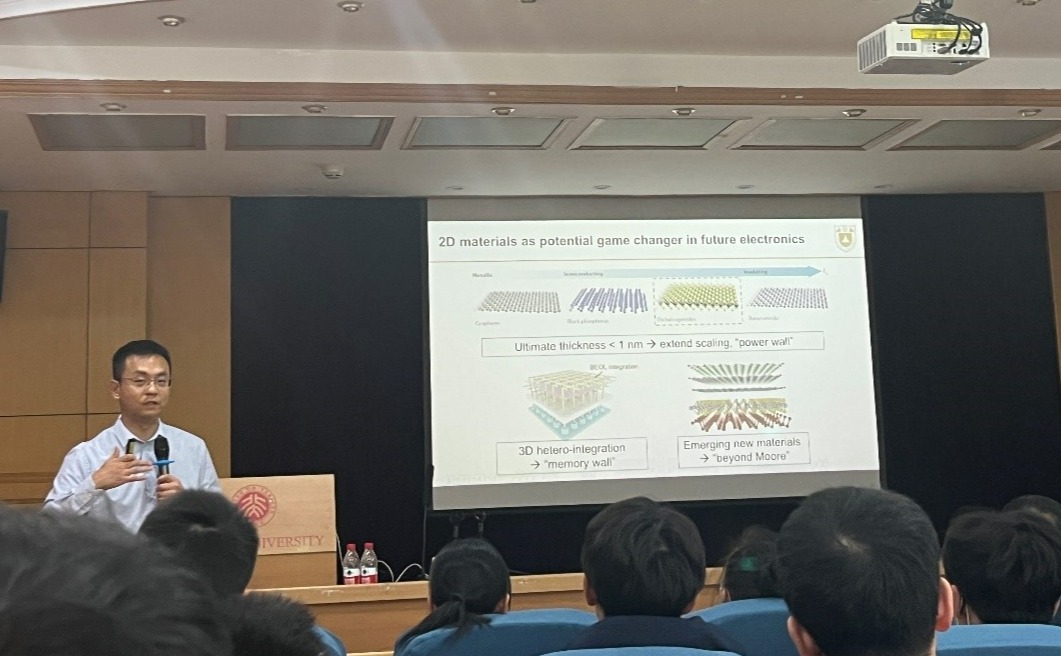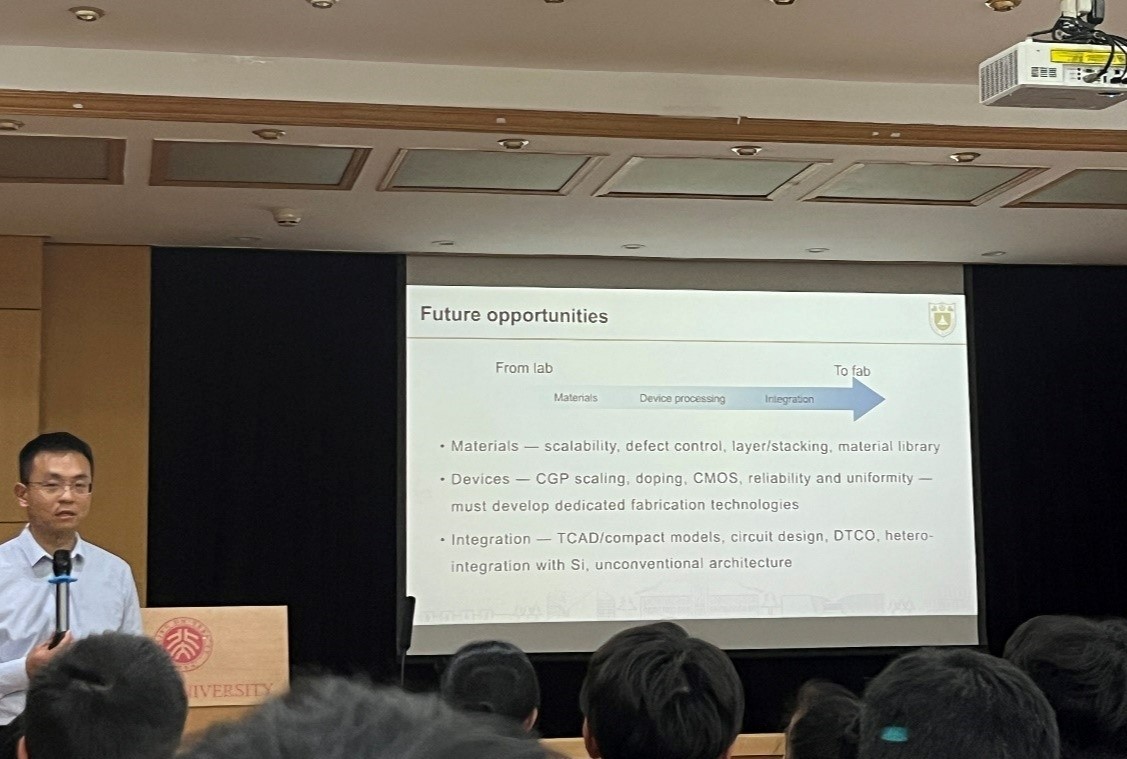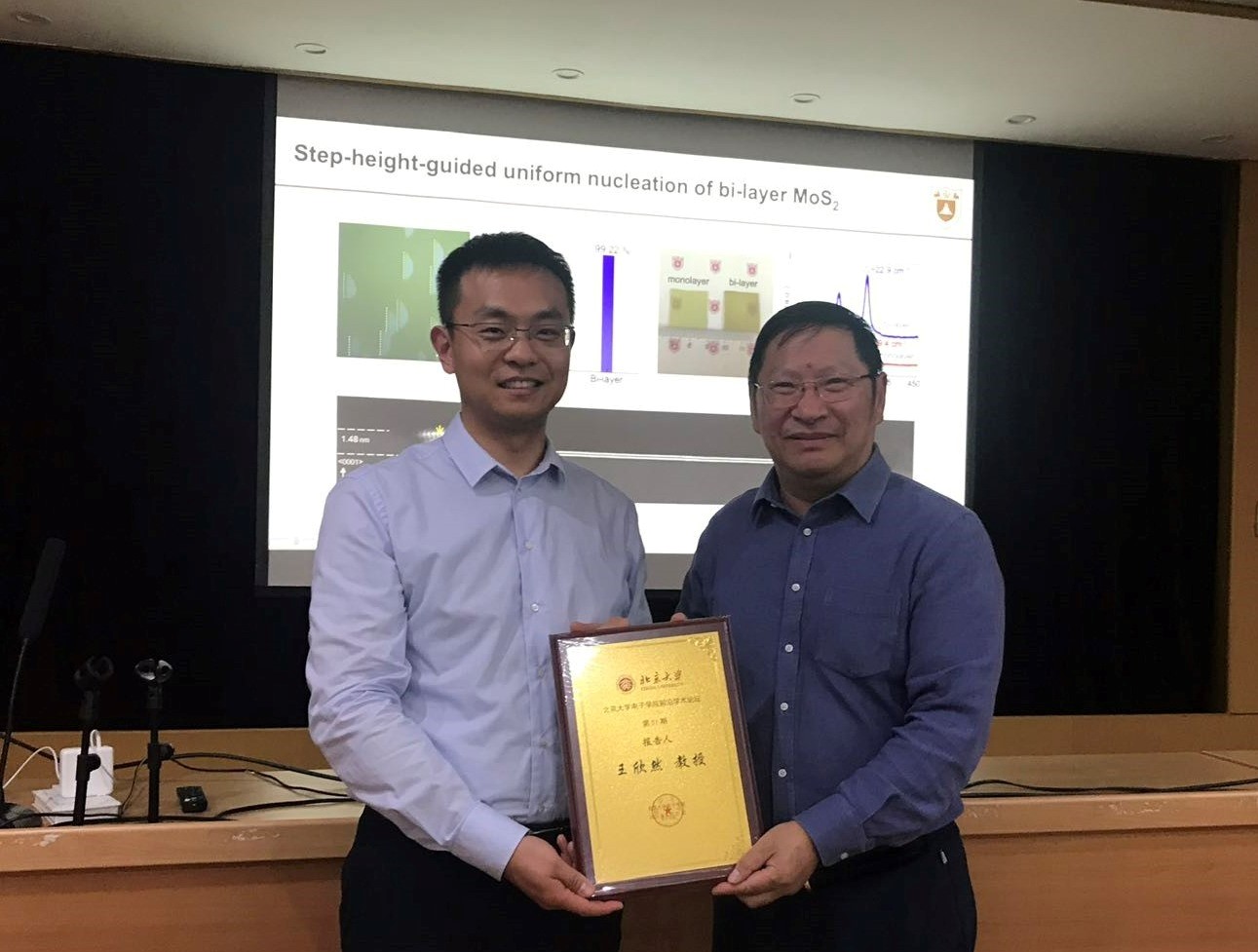On April 21, the 51st Academic Frontier Forum of the School of Electronics was successfully held. Professor Xinran Wang, the Vice Dean of School of Electronic Science and Engineering of Nanjing University, Executive Dean of School of Integrated Circuits of Nanjing University, the recipient of National Distinguished Youth Fund and Changjiang Scholar of Ministry of Education, gave a wonderful lecture titled "2D semiconductors for future computing". The lecture was hosted by Youfan Hu from the School of Electronics. About 100 students and faculty members attended the lecture.

First, Prof. Wang introduced three aspects of copper interconnects, stress bonds and high-K materials, which are the core drivers ofintegrated circuitdevelopment in the past 30 years. The development ofintegrated circuithas entered the "post-Moore era", which requires original innovation in the underlying materials and circuit architectures. 2D materials with ultra-thin channel thickness and low-temperature back-end heterogeneous integration are one of the effective ways to continue Moore's Law.

Following that, Prof. Wang introduced the main research contents of his group on two-dimensional semiconductor single crystal epitaxial preparation, high-performance electronic devices, three-dimensional optoelectronic integration and brain-like computing architecture. For single crystal epitaxial fabrication, Prof. Wang’s group has significantly improved the electron mobility of field effect transistor devices with double-layer molybdenum disulfide channels by designing the atomic platform height on c-face sapphire to achieve edge nucleation mechanism and molybdenum disulfide polycondensation into continuous centimeter-scale films. Then, Prof. Wang introduced his work on device technology, in which his group pushed the contact resistance of single-layer molybdenum disulfide to the quantum limit by hybridization of energy band and half-metal antimony, and prepared a high-performance molybdenum disulfide transistor with on-state current of 1.23mA/um, switching ratio of 108, and intrinsic delay of 74fs. Prof. Wang's group further optimized the device structure to reduce transistor Professor Wang's group further optimized the device structure to reduce the parasitic capacitance and prepared a high-speed ring oscillator, which reached the advanced level of 2.65GHz. Meanwhile, Prof. Wang proposed a duplex device structure based on ferroelectric effect transistor and atomically thin molybdenum disulfide channel from brain-like computing, which realized a new in-store computing architecture and greatly reduced computing power consumption.

Finally, Prof. Wang talked about the problems and development trends of future semiconductor development from laboratory to foundry. Professor Wang pointed out that there are still many problems in the area expansion, interface defect control, multilayer preparation and process library of 2D materials; at the device level, there are also many problems to be solved in the miniaturization of devices, doping and how to realize CMOS transistors; at the integration level, how to establish a reliable physical model, circuit design, how to integrate with silicon-based integrated circuits and how to develop In the integration level, there are many problems to be solved, such as how to establish a reliable physical model, circuit design, how to integrate with silicon-based integrated circuits, and how to develop new circuit architectures.

During the Q&A session, Prof. Wang discussed with the participating teachers and students on a series of issues such as whether domestic foundries can carry out the layout of production lines for 2D materials. At the end of the report, Academician Lianmou Peng, the Dean of the School of Electronics, granted Professor Wang a school's commemorative plaque.




